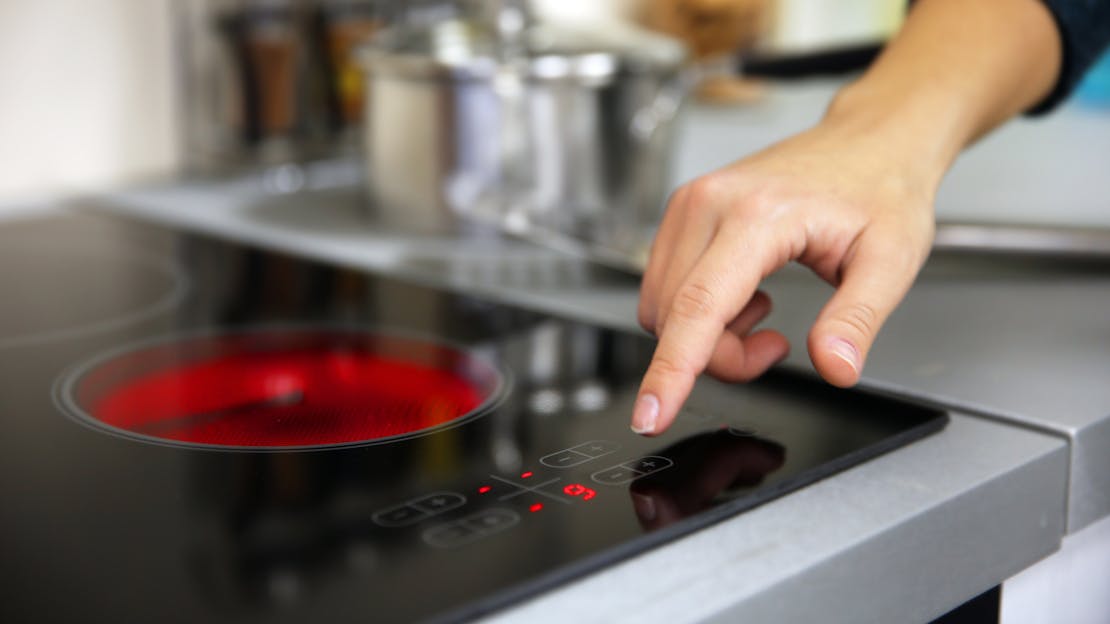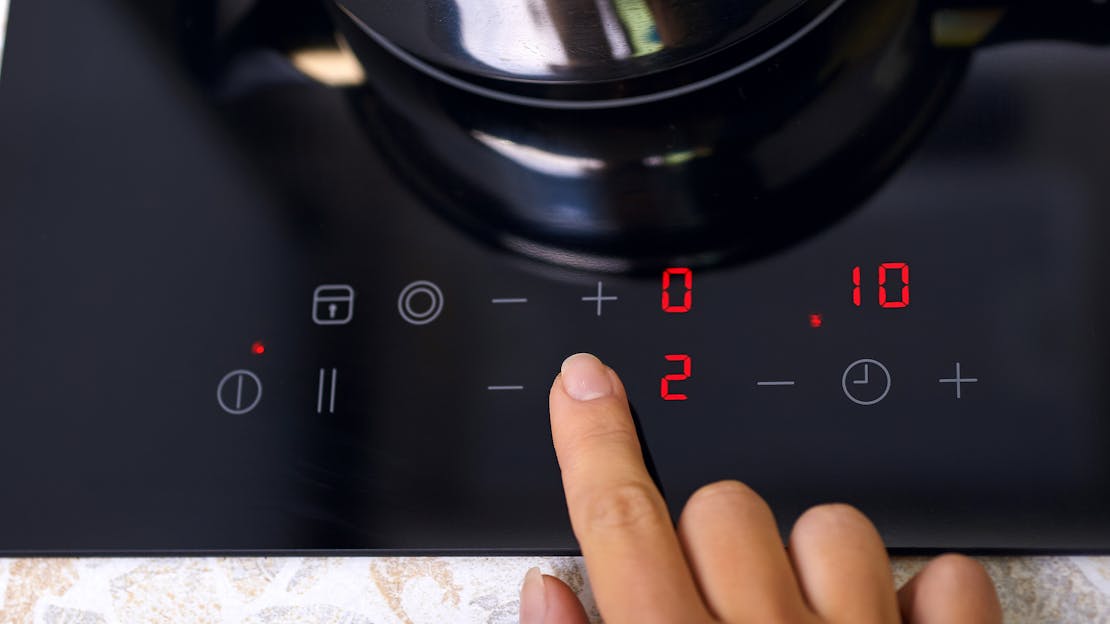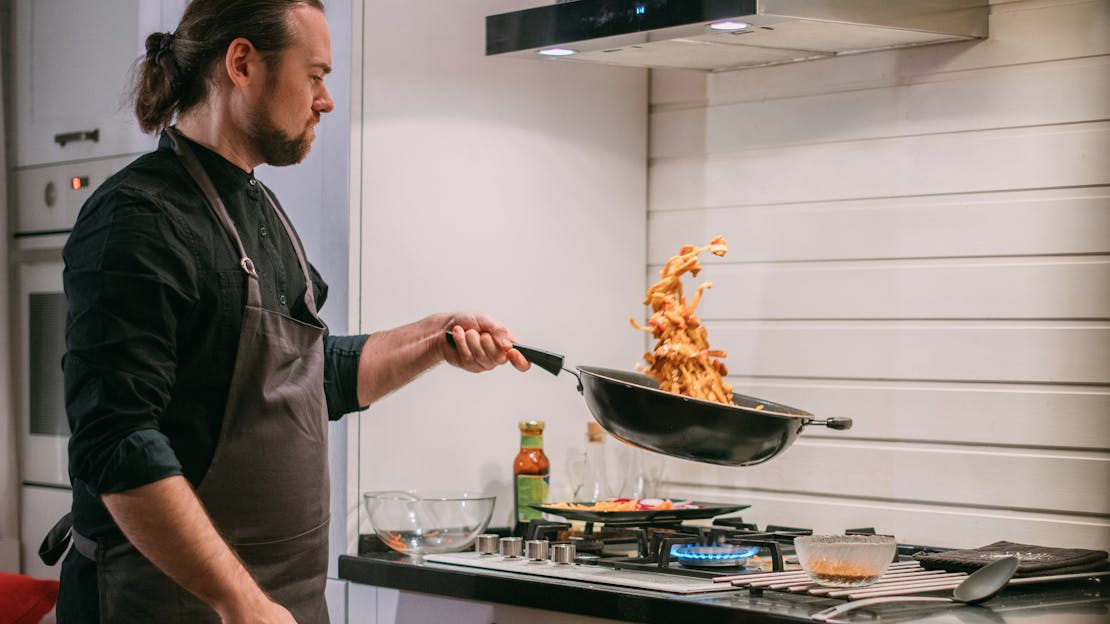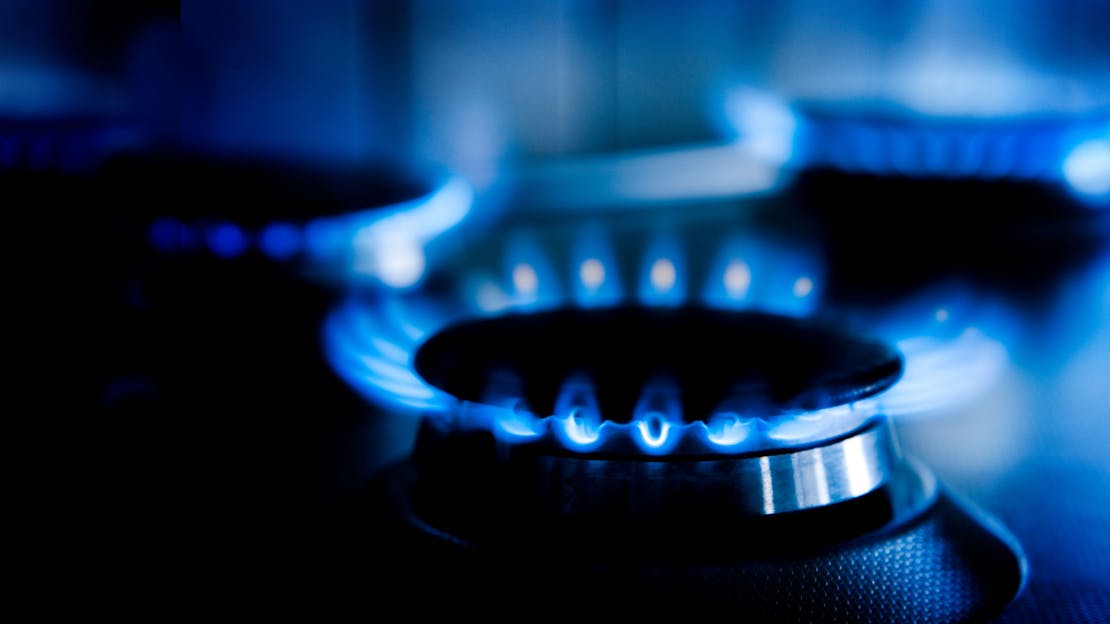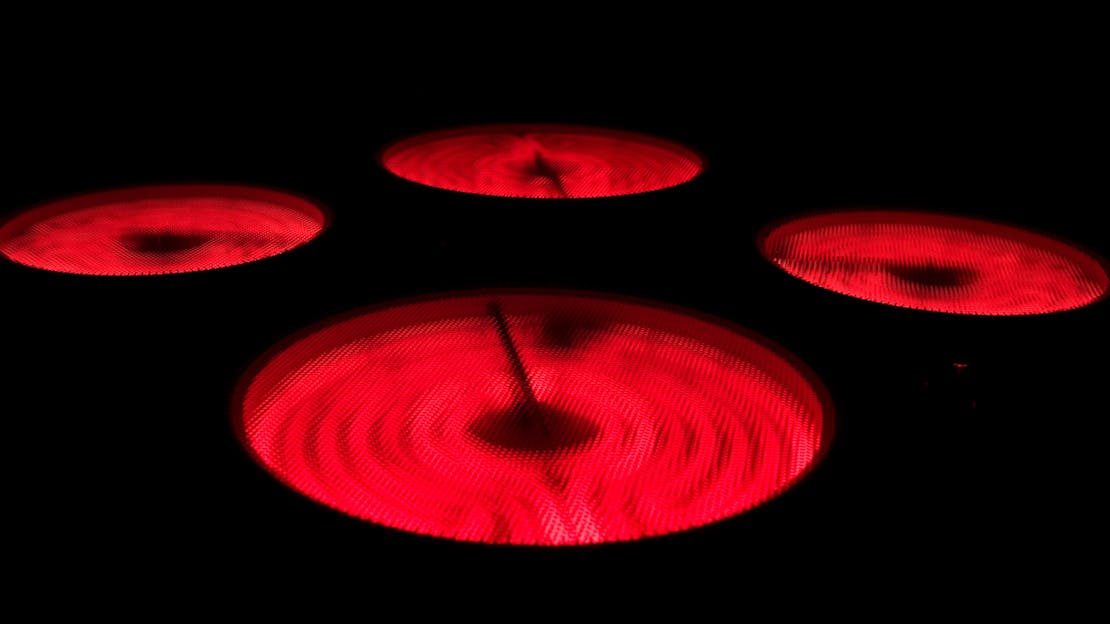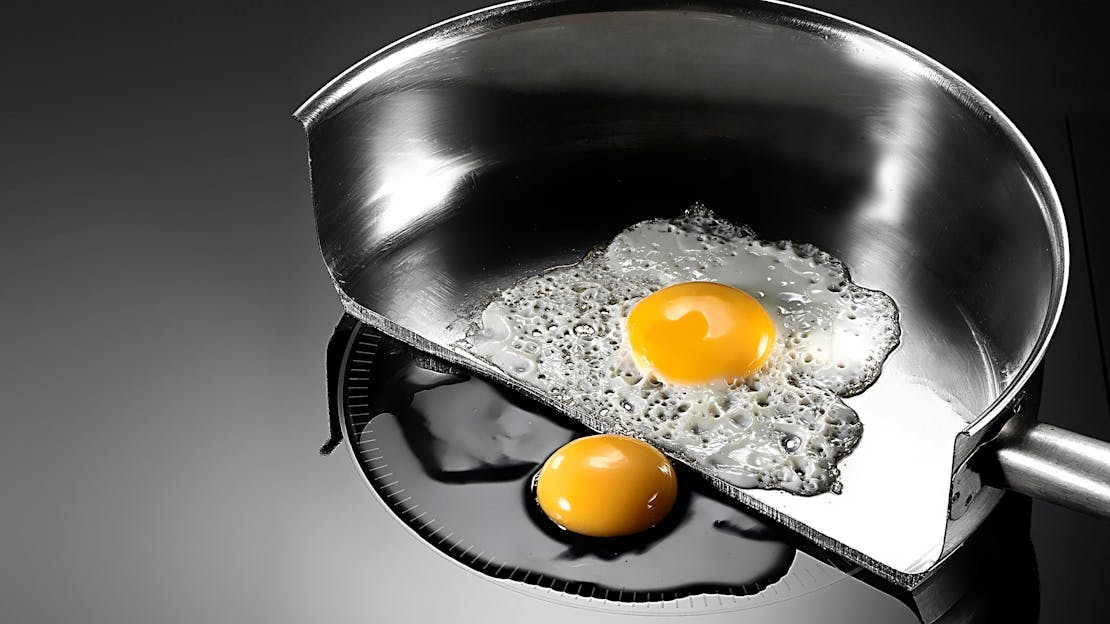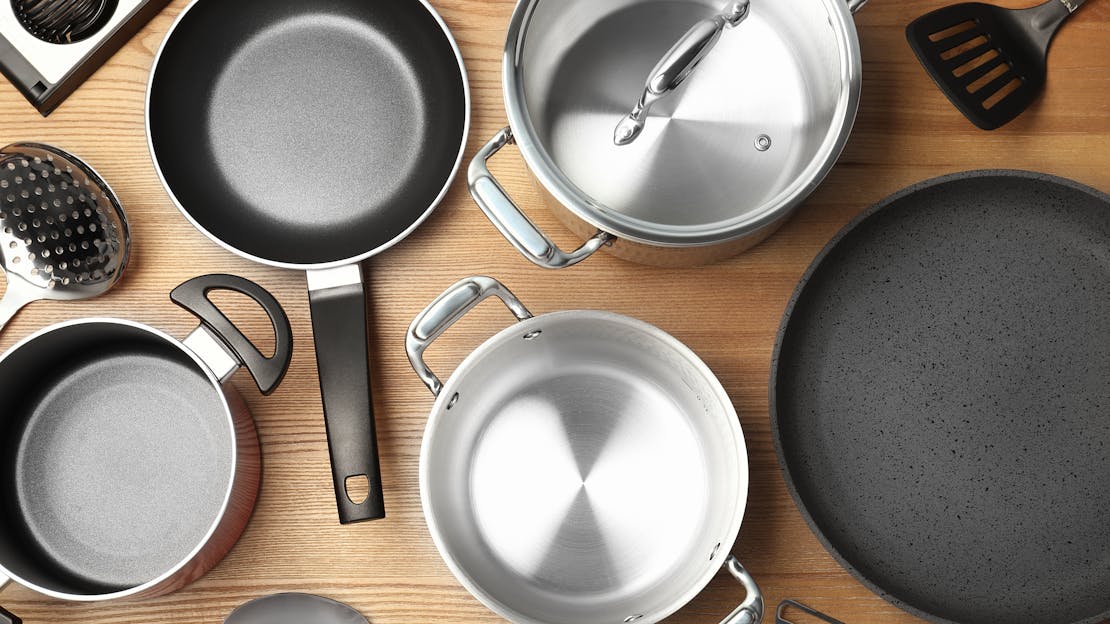
The Ultimate Guide to Which Pans Suit Which Hob Types
In the realm of culinary artistry, the symbiotic relationship between cookware and cooking appliances holds undeniable importance, dictating the triumphs and tribulations of the kitchen. Welcome to your compass for unravelling the intricacies of this fundamental interplay. This guide navigates through a spectrum of hob types — from the venerable gas hob to the cutting-edge induction hob — each demanding a specific pan companionship. From the foundational properties of diverse pan materials like stainless steel, cast iron, and copper, to the nuances of design that affect heat distribution and cooking performance, we leave no stone unturned. Whether you're curating your culinary arsenal anew or seeking to refine it, this guide empowers you to orchestrate the perfect union between pans and hobs, transforming every cooking endeavour into an exquisite symphony of flavours. Embark now on this journey of enlightenment and empower your kitchen with the wisdom to achieve gastronomic excellence.
Which pans should I use with my hob?
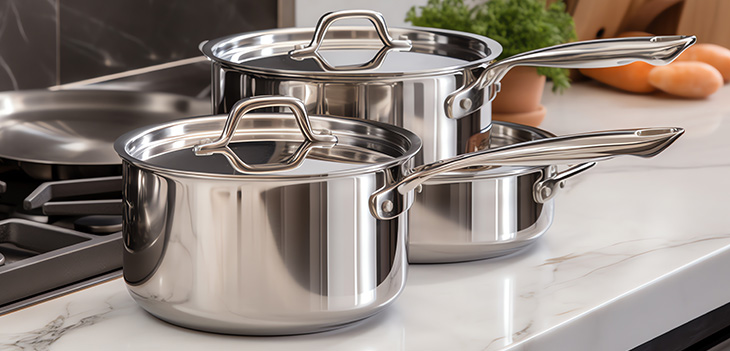
Gas hobs epitomise adaptability, offering a vast canvas for culinary innovation. Their inherent design facilitates seamless collaboration with virtually any pan, surpassing the need for exclusively flat-bottomed counterparts. This freedom emanates from the ingenious design of pan supports, which elevate the pans above the flames, diminishing the necessity for a flat base. Moreover, the inclusive embrace of diverse pan materials—ranging from the contemporary allure of aluminium to the timeless elegance of copper—establishes gas hobs as a sanctuary for creative culinary exploration. Essentially, gas hobs exude versatility, accommodating an array of cooking equipment with finesse.
In stark contrast, the realm of electric hobs imposes its own prerequisites. The imperative of pans with flat surfaces assumes centrality, as direct and complete contact with the hob's surface becomes non-negotiable. Although the range of pan materials remains receptive, the unequivocal requirement revolves around the pan's base flatness—a quintessential distinction setting electric hobs apart from their gas counterparts.
The significance of meticulously selecting the appropriate pans reverberates throughout your kitchen, profoundly impacting your hob's performance. Beyond culinary tools, your choice of pan set orchestrates a symphony of efficiency, optimising energy consumption and streamlining the cooking process. As culinary landscapes diversify, aligning different pan types harmoniously with distinct hob variations, our expert guidance serves as an indispensable compass, unlocking the full potential of your cooking space.
Venturing into the realm of pan acquisition, the triad of weight, material composition, and base structure emerges as the cornerstone of your decision-making process. While both gas and electric hobs present relatively lenient criteria, it is prudent to acknowledge that certain hob types resonate more harmoniously with specific pan varieties. This recognition underpins our guide's essence, as we steer you through the nuanced interplay between pans and hobs, ensuring that each culinary pursuit resonates with optimal taste and texture.
Which pans are best for ceramic hobs
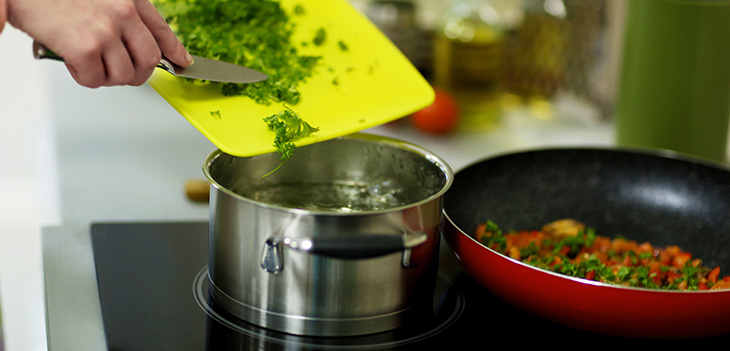
For ceramic hobs, it's essential to opt for pans with flat, smooth bases to ensure effective and uniform heat distribution across the surface. Here are some types of pans that work well with ceramic hobs:
Stainless Steel Pans: Stainless steel pans with flat bases and substantial weight are ideal for ceramic hobs. They distribute heat evenly and offer excellent searing and browning capabilities.
Cast Iron Pans: Cast iron pans are renowned for their capacity to evenly retain and disperse heat. They're well-suited to ceramic hobs due to their weight and robust structure, delivering stable cooking experiences while handling high temperatures for frying and searing.
Anodised Aluminium Pans: Anodised aluminium pans swiftly and evenly heat up, making them a superb choice for ceramic hobs. Their non-reactive surface proves advantageous for cooking a diverse range of dishes.
Copper Pans: Copper pans with flat bases and a core of stainless steel or aluminium are compatible with ceramic hobs. Copper's superior heat conductivity allows precise management of cooking temperatures.
Flat-Bottomed Non-Stick Pans: Non-stick pans with level bases are suitable for ceramic hobs, particularly for more delicate foods that require minimal oil. Opt for high-quality non-stick coatings that are durable and resistant to scratching.
Pans with Clad Bottoms: Pans featuring a clad bottom – typically a layer of aluminium or copper sandwiched between stainless steel layers – ensure even heat distribution on ceramic hobs.
When using pans on ceramic hobs, refrain from sliding them across the surface to prevent scratches. Moreover, select pans that match the size of the hob burner for efficient cooking. Always consult the manufacturer's guidelines for specific cookware compatibility with your particular model of ceramic hob.
Which pans are best for induction hobs
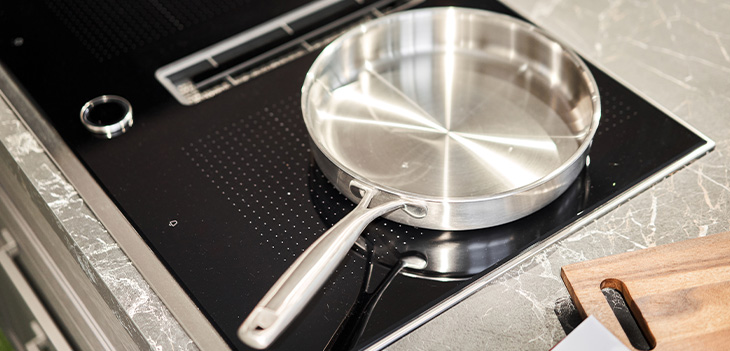
Induction hobs call for pans equipped with a magnetic base, as they operate by generating heat directly within the pan through electromagnetic induction. Here are some pan options that are ideally suited for induction hobs:
Stainless Steel Pans: Stainless steel pans with a magnetic base are exceptionally well-matched for induction hobs. Seek out pans labelled as "induction compatible" to ensure they possess the requisite magnetic attributes.
Cast Iron Pans: Cast iron pans inherently align with induction hobs due to their magnetic nature. They excel at heat retention and distribution, rendering them perfect for simmering and slow-cooking.
Enamelled Cast Iron Pans: Pans fashioned from enamelled cast iron are both magnetic and apt for induction cooking. They combine the advantages of cast iron with a non-reactive enamel coating.
Induction-Ready Non-stick Pans: Specific non-stick pans are crafted with a magnetic base to cater to induction cooking. It's essential to verify that the non-stick coating is high-quality and can endure induction heat.
Dedicated Induction Cookware: Numerous cookware brands offer tailored sets specifically suited for induction cooking, encompassing an assortment of pots and pans with the necessary magnetic attributes.
Pans with Clad Bottoms: Pans featuring a layered construction, typically incorporating a magnetic stainless steel or aluminium layer encased within other materials, are efficacious for induction hobs.
Bear in mind that induction hobsoffer enhanced efficiency and responsiveness, necessitating cookware with the appropriate magnetic qualities for optimal functionality. To determine compatibility of your existing pans, you can employ a magnet to ascertain if it adheres to the base of the pan. If it does, the pan should be suitable for use on an induction hob. Always consult your induction hob's manufacturer guidelines for precise cookware compatibility details.
Which pans are best for gas hobs
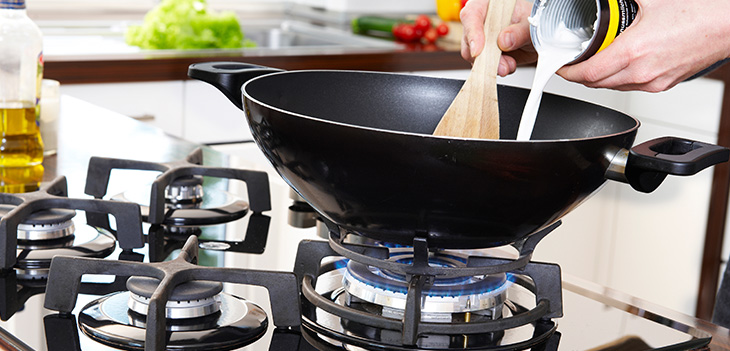
Gas hobs are versatile and can work well with a variety of pan types. Here are some types of pans that are well-suited for gas hobs:
Stainless Steel Pans: Stainless steel pans are a popular choice for gas hobs due to their durability and even heat distribution. Look for pans with a heavy bottom to ensure optimal cooking performance.
Cast Iron Pans: Cast iron pans are excellent for gas hobs as they retain and distribute heat evenly. They are perfect for dishes that require high heat, such as searing and frying.
Non-Stick Pans: Non-stick pans are great for delicate foods and dishes that require less oil. Choose high-quality non-stick pans with a flat bottom for even cooking.
Carbon Steel Pans: Similar to cast iron, carbon steel pans are known for their heat retention and can handle high temperatures. They develop a natural non-stick patina over time.
Copper Pans: Copper pans offer exceptional heat conductivity, making them suitable for precise temperature control. Pans with a stainless steel or aluminium base are better for gas hobs.
Aluminium Pans: Aluminium pans heat up quickly and are lightweight, making them ideal for tasks like boiling and sautéing.
Clad Bottom Pans: Pans with a layered construction (such as stainless steel or aluminium sandwiched between other materials) provide even heat distribution and are suitable for gas hobs.
Wok: For stir-frying and quick cooking, a wok with a flat bottom is a great choice for gas hobs.
When using pans on gas hobs, ensure that the pan size matches the size of the burner for efficient heating. Additionally, it's important to use flat-bottomed pans to maintain stability on the grates. Gas hobs offer the flexibility to use various pan materials, so consider your cooking needs and preferences when selecting pans for your gas hob.
Pan materials and their benefits
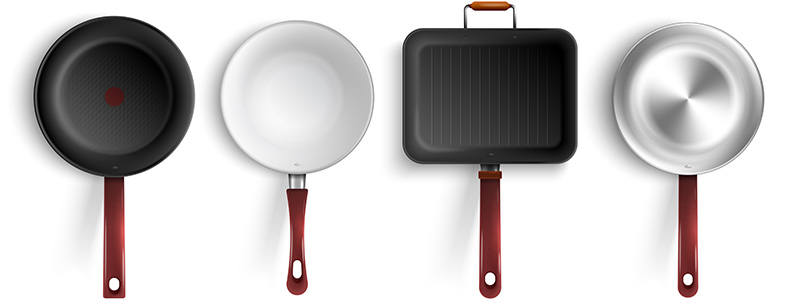
Stainless Steel:
- Durable and versatile, stainless steel pans offer even heat distribution and are great for various cooking techniques.
- Benefits:
- Durable and long-lasting.
- Even heat distribution.
- Ideal for browning and searing.
Cast Iron:
- Known for their excellent heat retention, cast iron pans are perfect for slow-cooking and high-temperature dishes.
- Benefits:
- Excellent heat retention and distribution.
- Versatile for stovetop and oven use.
- Develops a natural non-stick surface with seasoning.
Non-Stick:
- Non-stick pans prevent food from sticking, making them ideal for delicate foods and reducing the need for excessive oil.
- Benefits:
- Prevents food from sticking.
- Requires less oil for cooking.
- Great for delicate foods like eggs and fish.
Copper:
- Copper pans offer precise temperature control with rapid and even heat distribution, while adding an elegant touch to the kitchen.
- Benefits:
- Rapid and uniform heat distribution.
- Precise temperature control.
- Aesthetic appeal in the kitchen.
Aluminium:
- Lightweight and efficient, aluminium pans are perfect for quick heating tasks and are available with various coatings.
- Benefits:
- Quick and efficient heat-up.
- Lightweight for easy handling.
- Available with non-stick coatings or anodised for durability.
Carbon Steel:
- Similar to cast iron but lighter, carbon steel pans offer excellent heat retention and can handle high temperatures.
- Benefits:
- Similar to cast iron but lighter.
- Excellent heat retention and high-temperature tolerance.
- Develops a seasoned, non-stick surface.
Anodised Aluminium:
- Anodised aluminium pans are hard, durable, and easy to clean, providing even heat distribution and resistance to sticking.
- Benefits:
- Hard, durable, and resistant to sticking and staining.
- Even heat distribution.
- Easy to clean.
Clad/Composite:
- Clad pans combine the benefits of different materials for efficient heat distribution and durability, often featuring non-reactive cooking surfaces.
- Benefits:
- Combines benefits of different materials.
- Efficient heat distribution and durability.
- Often features non-reactive cooking surfaces.
Enamelled Cast Iron:
- Enamelled cast iron pans offer the heat retention of cast iron with a non-reactive enamel coating, perfect for slow-cooking and braising.
- Benefits:
- Combines heat retention of cast iron with non-reactive enamel coating.
- Versatile for slow cooking and braising.
- Retains and evenly distributes heat.
Hard-Anodised Aluminium:
- Hard-anodised aluminium pans are durable and resistant to scratching, providing even heat distribution and minimal reactivity with foods.
- Benefits:
- Durable and resistant to scratching.
- Even heat distribution.
- Less reactive with foods.
Each pan material has its distinct advantages, enabling you to choose the best fit for your cooking preferences and the dishes you love to create.
What pan is best for me?
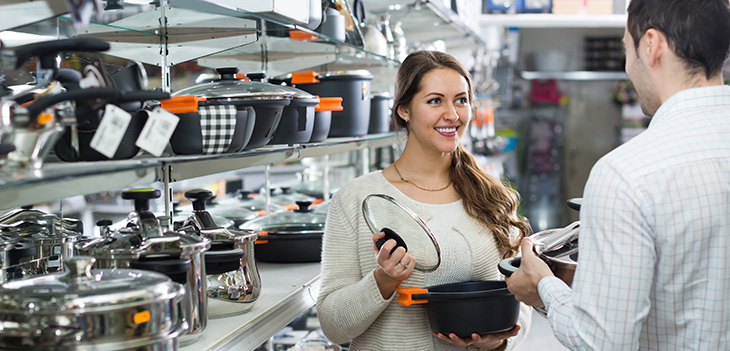
The best pan for you depends on your cooking preferences, style, and the types of dishes you often prepare. Here's a brief guide based on different scenarios:
| Cooking Scenario | Best Pan Options | Benefits | Suitable for Induction Hobs |
|---|---|---|---|
| Versatile Everyday Cooking | Stainless Steel, Hard-Anodised Aluminium | Even heat distribution, durability, versatility | Yes |
| Delicate Foods and Easy Clean-up | Non-Stick, Ceramic-Coated | Prevents sticking, requires less oil, easy to clean | Yes |
| High-Temperature Cooking | Cast Iron, Enamelled Cast Iron | Excellent heat retention, suitable for stovetop and oven | Yes |
| Professional Searing and Browning | Stainless Steel, Carbon Steel | High-temperature capabilities, ideal for caramelisation | Yes |
| Rapid Heating and Quick Cooking | Aluminium | Fast heat-up times, lightweight design | Some |
| Precise Temperature Control | Copper | Rapid and uniform heat distribution, elegant appearance | No |
| Health-Conscious Cooking | Ceramic-Coated, PTFE-Free Non-Stick | Minimal oil use, non-reactive surfaces | Yes |
| Diverse Cooking Styles | Clad/Composite Pans | Combines materials for versatile performance | Yes |
| Traditional and Hearty Dishes | Cast Iron, Enamelled Cast Iron | Excellent for slow-cooked comfort foods | Yes |
In conclusion, making the right pan choices is a pivotal aspect of refining your cooking experience. The assortment of pan materials and coatings available presents an array of advantages, enabling you to tailor your cookware selections to your cooking style, preferences, and the dishes you relish preparing.
From the enduring strength of stainless steel to the exacting heat control offered by copper, each pan type brings its own distinctive merits to the kitchen. Whether you're a seasoned chef or an enthusiastic home cook, grasping the attributes of different pan materials and coatings empowers you to elevate your culinary skills and craft dishes with precision.
Keep in mind that compatibility with your hob type—be it gas, electric, or induction—is an essential consideration when selecting pans. For instance, induction hobs necessitate pans with magnetic properties to ensure efficient heating. Always refer to manufacturer guidelines to confirm that your chosen pans are harmonious with your hob.
In the end, curating a well-rounded collection of pans has the potential to significantly enhance your culinary explorations. So, armed with knowledge, venture into this journey, experiment with a variety of pan types, and savour the pleasure of creating delightful meals that align with your unique taste and style. After all, your pan selections serve as the foundation of your kitchen expertise.
Top Selling Hobs from MyAppliances
Discover the epitome of cooking versatility with our leading range of hobs, featuring induction, gas, and ceramic options. Engineered to meet the demands of modern kitchens, our best sellers combine innovative technology with sleek design to deliver exceptional performance every time. Explore our top picks today and revolutionise your cooking space.
More hob guides and advice
More hob guides and advice
-
If you’re in the market for a new hob, it’s worth considering an induction hob. Induction hobs offer a range of benefits over traditional gas and electric hobs, from energy efficiency to precise temperature control. In this article, we’ll explore what induction hobs are, how they work, and why you should consider purchasing one for your kitchen.
-
Electric hobs have been a staple in kitchens for decades, and for good reason. They’re easy to use, reliable, and offer a range of features that make them an excellent choice for home cooks. In this article, we’ll explore what electric hobs are, how they work, and who should consider purchasing one for their kitchen.
-
In this article, we’ll explore the differences between gas, electric and induction hobs, and help you make an informed decision about which hob to buy.
-
Hob Buying Guides
Deciding which hob to buy can be challenging, given the range of options available. This guide aims to simplify the process by detailing the various aspects of induction, ceramic, and gas hobs.
-
Hob Buying Guides
If you're considering upgrading your kitchen hob, you may find yourself mulling over the fascinating world of induction hobs. As one of the leading manufacturers of all types of hobs, we're here to help navigate you through this often bewildering terrain. Welcome to the Ultimate Induction Hob Buying Guide!
-
Hob Buying Guides
If you're considering purchasing a gas hob for your kitchen, this guide will provide you with all the essential information you need to make an informed decision. Throughout this guide, we'll explore the advantages, safety considerations, installation process, cleaning tips, and cost considerations associated with gas hobs.
-
Hob Buying Guides
Ceramic hobs have revolutionised cooking, offering a sleek and modern aesthetic combined with practical and efficient functionality. So what exactly is a ceramic hob?
-
Hob Buying Guides
Offering a traditional way to cook food on a hob, our gas hobs here at MyAppliances are simple to use and will instantly update your kitchen.
-
Hob Buying Guides
Extremely easy to use, our ceramic hobs are a dream to clean, too. With handy touch control features, these appliances offer value for money and a fuss-free way to cook.
-
Hob Buying Guides
Economical and well-designed, our induction hobs here at MyAppliances come in a range of sizes and are easy to install, too.


